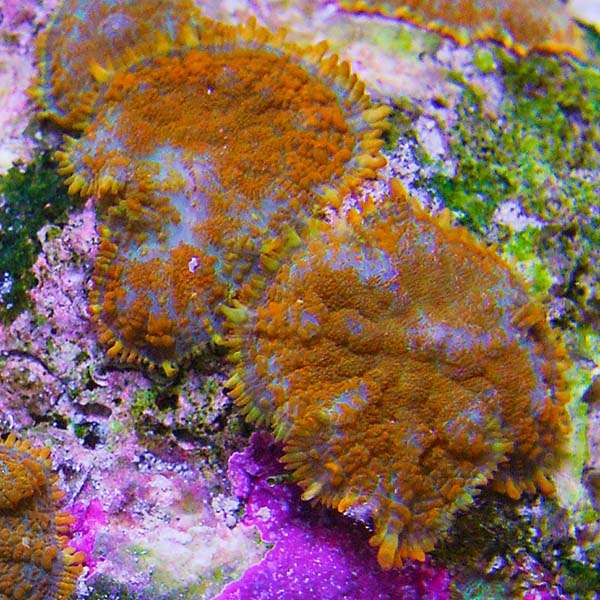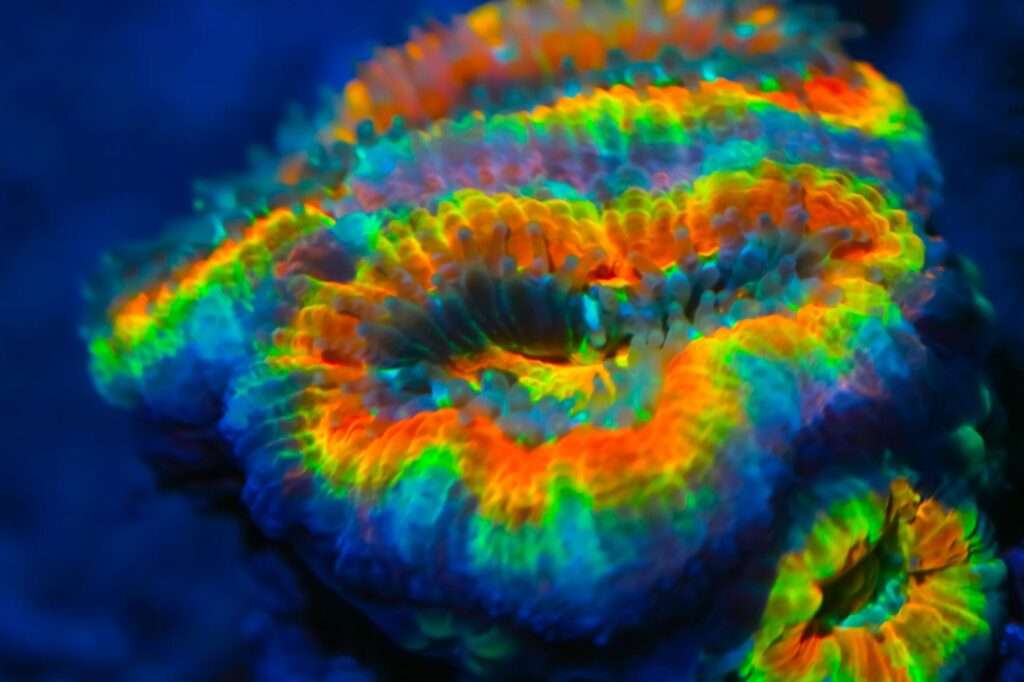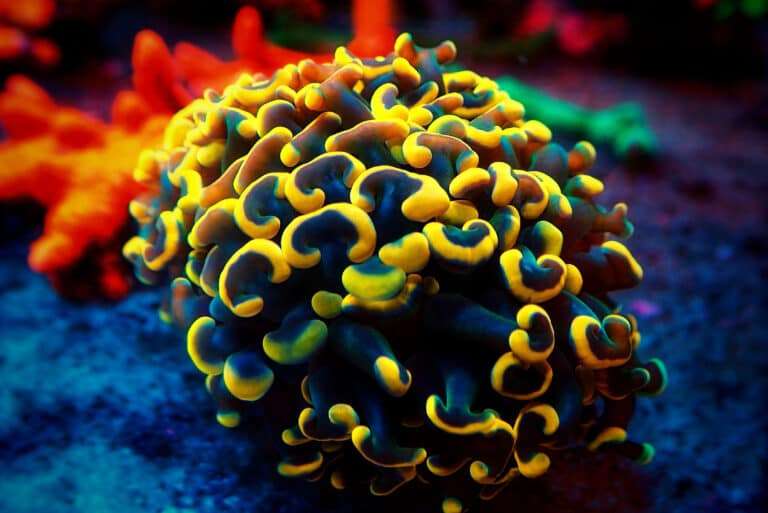
Coral Bullseye in the wild, Caulastrea curvata creates expansive, slow-growing colonies that can be over 16 feet (5 meters) in diameter. Compared to other Caulastrea species, it has significantly more openly spaced unique branches. The extended, twisted, and branched corallites spread out from a single base. Torch coral, Trumpet coral, and Candy coral are a few additional names for it.
The Bullseye coral’s polyps begin by growing on their own stalks, but as they ascend, they frequently divide. The polyp might be green or brownish-green in hue with a pale brown or green core. As a result of its septa’s propensity for exaggeration, it may appear to have white “stripes,” giving it a “candy cane” appearance. However, if the sun is too strong or the water contains too many nutrients, the striping may vanish.
Habitat
The Bullseye Coral Wijsman-best first described Caulastrea curvata in 1972. In captivity, the C. curvata has been reproduced. As a rule, specimens raised in aquaculture are tougher and occasionally have a little more variance in the tones of the colours they are usually seen with in the ocean.
The Caulastrea genus is primarily found in shallow, clear water with a surging water flow on coral slopes with sand substrate. At depths of up to 131 feet, C. curvata are primarily found on reef slopes and flat substrates (40 m).
Morphology
A branching formation coral is the bullseye coral, C. curvata. They build enormous, slowly expanding colonies in the wild that can reach a diameter of over 16 feet (5 meters). They develop short stalks from a single base that frequently split into two or more long corallite heads. Compared to other Caulastrea species, it has significantly more openly spaced unique branches. The slender corallites are twisted, elongated, and branching. The distinguishing species name “curvata” refers to the tendency of the branches nearest the colony’s edge to curve upward.
The 8 mm-diameter polyp heads have an amorphous form and are not round. The polyp might be green or brownish-green in hue with a pale brown or green core. Because of its septa’s propensity for exaggeration, it may appear to have white “stripes,” giving it a “candy cane” appearance. However, if the sun is too strong or the water contains too many nutrients, the striping may vanish.
In Captivity

- Feeding
Caulastrea corals have evolved a variety of feeding techniques. They get some of their nutrients from a marine alga called zooxanthellae through a symbiotic interaction. They can also take in dissolved organic substances and planktonic creatures as well as food particles from the water column.
They can be fed when their tentacles are extended in captivity, but if food is present, they will emerge during the day. Feed mysis, seafood that has been coarsely minced, and items of a similar size. They do require feeding at least twice a week, and regular feedings help them grow very well. It is beneficial to stop the water pumps when feeding.
- Social Interactions and Compatibility
When in close proximity to other corals, Caulastrea corals have the potential to become semi-aggressive, so there should be some space between them. In general, it is not quite correct to suggest that a coral is calm since its tentacles are shorter. The species of Caulastrea are frequently discovered in the wild alongside commensal mollusks, sponges, zoanthids, and other sessile invertebrates. Although zoanthids frequently encroach on coral heads, the coral does not appear to mind.
Table





